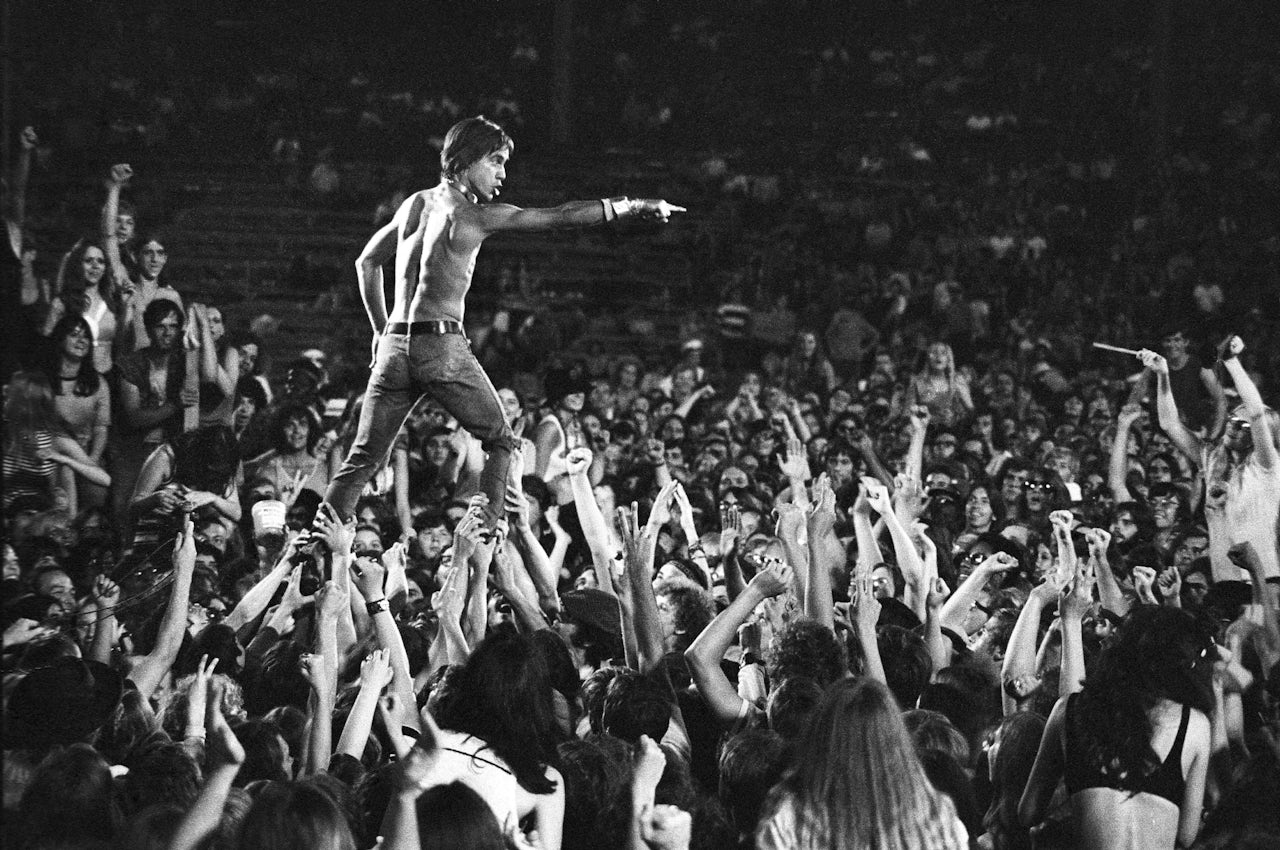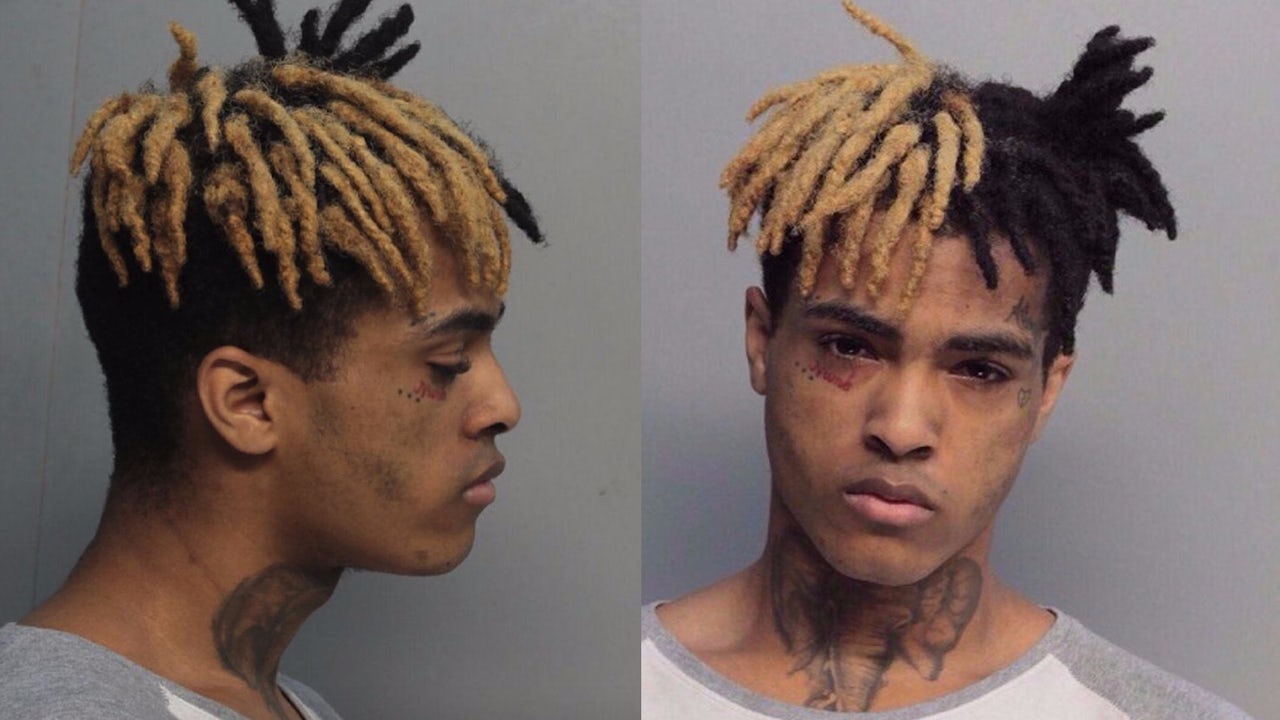During a performance at the 1970 Summer Pop Festival in Cincinnati, Ohio, The Stooges’ Iggy Pop did something unexpected. Black-and-white footage from the concert shows Iggy sloshing around the stage in the way rockers of the time did, before slinking down the front and decamping into the crowd. A local TV broadcast of the show went to a commercial break, with the announcers confused about what he was doing. “Since we broke away for our message, Iggy has been in and out of the crowd three different times,” an announcer declared. “They seem to be enjoying it and so does he.”
According to rock folklore, this was one of the first instances of a musician “stage diving.” That is, leaving the vaunted protection of the stage in order to commune, viscerally, with the audience. Iggy Pop’s stage dive involved very little in terms of actual diving — he more or less slipped into the audience, never straying far from the front row — but it marked the beginning of a trend that would come to play a significant role in the live music experience. The stage dive typically serves as a precursor to a crowd surf, where an artist or fan is carried by members of the audience as though they’re surfing on top of them. Sometimes musicians will stage dive to join in a mosh pit, where a mass of fans push into one another in expressions of jubilation, aggression, and excitement. As the years went on, performers started to find increasingly inventive ways to engage with their audiences, suspending themselves from the ceiling and creating moving stage platforms. But stage diving, crowd surfing, and moshing remain a staple of live music.
Nowhere is this more evident today than in the world of hip-hop, where rappers like Tyler, the Creator, Lil Uzi Vert, and Tory Lanez, have turned death-defying crowd jumps into performance calling cards. Moshing and similar performer-crowd interactions have had a distinct presence in hip-hop going as far back as the ’80s, when the Beastie Boys started drawing mixed crowds of hip-hop fans and punk kids. But today’s acts up the ante, and often go viral in the process. YouTube is littered with fan-recorded videos of rappers throwing themselves off of everything from venue scaffolding to towering speaker setups. In a video of a performance in Miami, Lil Uzi Vert is seen jumping from the second floor of a structure on stage into the crowd. At his performance at Coachella, the 22-year-old rapper swam in a sea of fans who gyrated with his every move. During a performance at Fool’s Gold Day Off in Montreal, rapper Jazz Cartier jumped off of a roof and into the crowd.
Travis Scott has perhaps set himself apart in his affinity for stage diving and mosh pits. The rapper’s shows are known to be unruly affairs where crowd members thrash and stomp into one another, waiting for the moment Scott leaps into the audience, as he often does. There’s even footage of Drake in a mosh pit at one of his shows. Last month, at a concert at New York’s Terminal 5, Scott encouraged a fan dangling from a second floor balcony to jump on his cue. “Don’t be scared, they’ll catch you,” he said, before he asked a light technician to flash a spotlight on him. The kid eventually made the two-story leap. And then another fan, on the third floor balcony, jumped from the top of the venue into the audience, breaking his leg and fracturing his back. (As he was being carried out on a stretcher, Scott offered him his ring, which he accepted.) The rapper’s team contends that he did not instruct the fan to jump from the third floor balcony, and are looking into the incident.
“The safety of everyone is held in the highest regard and we are currently conducting an internal investigation to ensure that this does not happen again,” a spokesperson for Scott told TMZ. “We are deeply concerned about the guest who was injured and intend to offer him our support.”
Not long after his New York performance, Scott was arrested following a show in Arkansas for inciting a riot. In a statement posted to its Facebook page, the Rogers Police Department alleged that he “encouraged people to rush the stage and bypass the security protocols.”
Some of the fans at the concert felt differently. Speaking to Complex, one attendee, John Stark, contended that "In no way at all was it anywhere near a riot. It was just a bunch of people having the best night of their lives." Scott himself tweeted after the incident, “IM HEAR [sic] TO CAUSE A GOOD TIME. NOT HARM. #FreeTravisScott.” Scott isn’t alone in facing charges for a rowdy audience. Tyler, the Creator was arrested at South by Southwest in 2014 following a particularly raucous set at a Vans showcase. The rock band Fishbone had to pay $1.4 million in damages to a fan who broke her skull and collarbone after lead singer Angelo Moore stage-dove and landed on top of her during a 2010 concert in Philadelphia. Miguel famously kicked a woman in the face by accident after attempting to stage dive during a televised performance at the Billboard Music Awards. The incident resulted in a lawsuit.
These miscalculations don’t deter artists like Travis Scott, who see rowdy concerts as a point of pride. The rapper told GQ that he sees his performances as a way to live out his dreams of being a professional wrestler. “The Hardy Boys was fucking amazing, and X-Pac was like my idol, so with performances I always want to make it feel like it’s the WWF or some shit,” Scott said. “We don’t like people who just stand around.”
But when thousands of fans rush a stage or willfully jump from obscene heights into the crowd, people are likely to get hurt. During Iggy Pop’s famous performance, the audience barely filled out past the first few rows of the stadium, and in the small punk and hardcore clubs where mosh pits were perfected, an unwritten code informed audiences on how to avoid getting injured. Some acts even go so far as to actively make sure the audience is safe. The punk band Joyce Manor caused a stir when, in 2014, they paused a performance to stop stage diving fans who they noticed were kicking smaller crowd members in the face. The band commented on Facebook, saying, “I wasn't able to watch people being hurt so I asked people not to act in the way that was hurting people. If that means you don't support the band, I respect that.”
The conditions are quite different at the sold out stadiums that rappers like Travis Scott and Lil Uzi Vert transform into impromptu wrestling matches. At smaller venues it's easier for people to notice someone being trampled, and more difficult for fans to sustain serious injuries from a stage dive. The chaos of a packed stadium moshing is much harder to control, and even harder to predict. After a botched stage dive at New York’s Carnegie Hall left him injured in 2010, then 62-year-old Iggy Pop actually retired from stage diving all together.
This isn’t to say there is no underlying logic to the chaos of crowds big and small. Jesse Silverberg, a fellow at the Wyss Institute for Biologically Inspired Engineering at Harvard University, observed mosh pits at heavy metal concerts and discovered that, while people undoubtedly move around at random, the pits tend to bounce around with the same statistical signature as molecules of air. In an email, I asked him what happens when it is the performer jumping into the crowd. “In my experience, a performer that steps off stage and into the audience strongly attracts people,” he wrote. “When people push toward a central point of interest like this, they collectively become a solid-like material with mechanical properties.”
It perhaps explains the continued faith performers have in the structural integrity of their audiences. Not just in the physical composition of their crowds, but in their level of adoration. If an artist like Travis Scott leaps, it seems, his fans will always be there to catch him.




